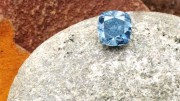In the 1990s, Aber Diamond was one of the first to join Canada’s diamond rush, set off by the discovery of diamonds in the Northwest Territories by Dia Met Minerals in 1991.
It ended up with 40% of the rich and prolific Diavik diamond mine, which produced 7.2 million carats of diamonds last year.
Having gotten in on the ground floor at Diavik, the company, recently renamed Dominion Diamond, has understandably struggled to find other similarly attractive growth opportunities.
That is, until now.
With majors BHP Billiton and Rio Tinto looking to exit the diamond sector, Dominion is eager to take their places.
The company has already bought BHP Billiton’s sole producing diamond asset, an 80% stake in the Ekati mine, also in the Northwest Territories.
It has also set its sights on further growth via its partner Rio Tinto’s 60% stake in Diavik, although Rio hasn’t made any decisions yet on its diamond division.
But considering that rough diamond prices declined 12-15% last year, it’s worth considering the state of the market and what the prize actually is.
In an interview in April, Dominion Diamond chairman and CEO Robert Gannicott said that although the market has picked up since late last year, “it’s not a spectacular improvement. . . It’s got some way to go to become what you might call buoyant again.”
But what about that growing gap between supply and demand — largely from Asia — that diamond-folk have been talking about for years?
In a presentation in November, Dominion’s vice-president of corporate development, Richard Chetwode, assured the audience that the long-predicted gap still lies ahead.
“We’re in a time of flux. We will have much greater volatility in the diamond market because De Beers is no longer controlling it,” he said at the Scotiabank Mining conference in Toronto.
“We know where the new mines that can come on are going to come on. . . But there is a supply/demand gap that you’re not seeing this year, you may not see next year — but you will see it at some point. And that has changed the entire dynamics of how the actual diamond market works.”
The Asian growth story remains intact, with 30% of the brides in urban areas of China receiving diamond engagement rings and signs of further growth ahead, Chetwode says.
“It’s fantastic, it’s pure diamond addiction in the best sense than we ever saw in America,” he said. “The more you have, the more you want, the more you wear, the more you get.”
Last year, overstocking in China, where growth failed to match the 25% increase seen in 2011, and the rupee’s plunge in value in India, dampened the market. But that doesn’t mean the fundamentals have changed.
The gap is coming, and Dominion is positioning itself to reap the rewards.



Be the first to comment on "Signs of life in the diamond space"